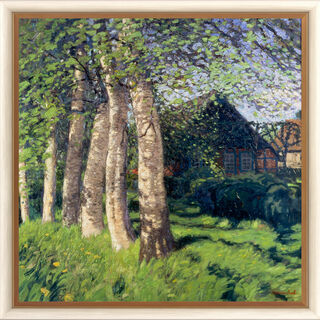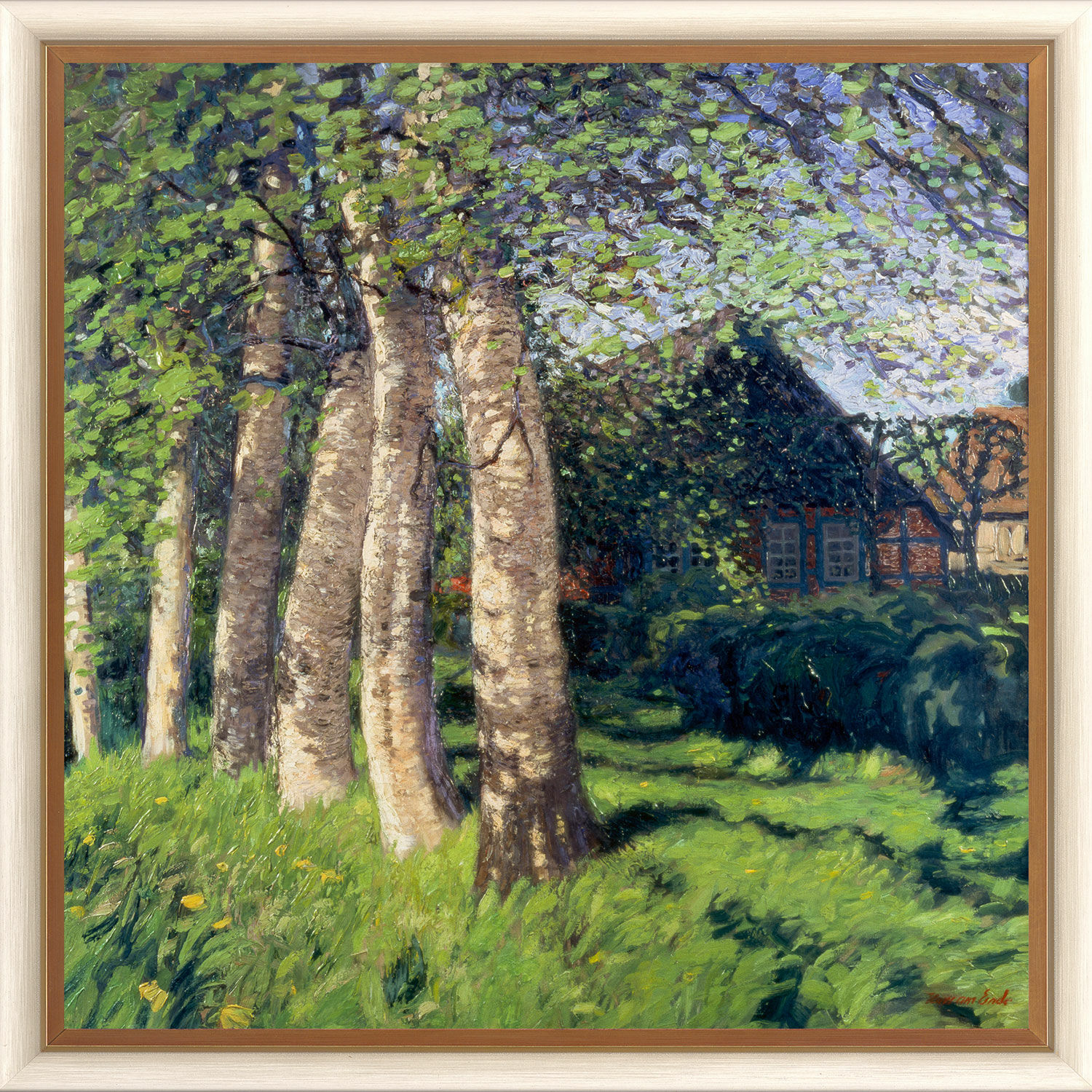Picture "Spring in Worpswede" (1900), framed


Picture "Spring in Worpswede" (1900), framed
Quick info
limited, 990 copies | numbered | reproduction, Dietz Giclée print on canvas | on stretcher frame | framed | size 75 x 75 cm
Detailed description
Picture "Spring in Worpswede" (1900), framed
The important German impressionist and landscape painter Hans am Ende (1864-1918) settled in Worpswede in 1889. He was one of the founders of the legendary artists' colony, alongside Fritz Mackensen and Otto Modersohn. His painting often differed from his artist friends in its radiant luminosity. He captured the spring mood in the idyllic landscape around Worpswede with this masterful painting.
Original: 1900, oil on canvas, 100 x 100 cm, Worpswede Kunsthalle Friedrich Netzel.
The renowned Dietz-Offizin is famous for the authentic reproduction of masterly paintings on high-quality artists' canvas. This modern Giclée edition is created with special lightfast colours that have a high level of nuance, contrast and saturation. The same care and attention to detail that collectors and enthusiasts have come to know from Dietz-Offizin is applied.
Original Dietz Giclée print on canvas. Stretched on a stretcher frame. Limited edition of only 990 copies, numbered on the back. Framed in a high-quality solid wood frame. Size 75 x 75 cm.
About Hans am Ende
In 1889 Hans am Ende co-founded the artists’ colony in Worpswede together with Fritz Mackensen, Otto Modersohn, Fritz Overbeck, Heinrich Vogeler and Carl Vinnen. Their participation in the Munich Artists' Cooperative Exhibition of 1895 resulted in honours and purchases for the small group and thus their artistic breakthrough.
Hans am Ende, born in Trier on 31 December 1864, became a student at the Munich Academy from 1884-89, with an interruption of two years. His personal acquaintance with Fritz Mackensen, who had discovered the unknown farming village in the Teufelsmoor north of Bremen by chance, prompted Ende to settle in Worpswede for good in 1889.
Hans am Ende's strongly coloured paintings mainly focus on the moorland. Here he was far away from the academic art establishment and found an immediately captivating experience of nature. He captured the rugged landscape in atmospheric, delicate nature paintings.
In his later work, the Swiss high mountains became the focus of his motifs. He spent the last years of his life there and died in 1918.
Giclée = derived from the French verb gicler "to squirt, spurt".
The giclée method is a digital printing process. It is a high-resolution, large-format printout on an inkjet printer with special different-coloured dye- or pigment-based inks (usually six to twelve). The colours are fade-proof, i.e. resistant to harmful UV light. They have a high richness of nuance, contrast and saturation.
The giclée process is suitable for art canvases, handmade and watercolour paper as well as for silk.
The style of Impressionism, which emerged in French painting around 1870, owes its name to Claude Monet's landscape 'Impression, Soleil Levant'. After initial rejection, it began a veritable triumphal procession.
Painters such as Claude Monet, Edgar Degas, Edouard Manet, Auguste Renoir and others created motifs from everyday life, urban and landscape scenes in bright, natural light.
Impressionism can be seen as a reaction to academic painting. The emphasis was not on content with its strict rules of painting structure, but on the object as it appears at any given moment, in an often random cut out. The reality was seen in all its variety of colours in natural lighting. The Studio painting was replaced by open-air painting.
Through the brightening of the palette and the dissolution of firm contours, a new approach to colour emerged. In many cases, the colours were no longer mixed on the palette but side by side on the canvas so that the final impression lies in the eye of the viewer with a certain distance. In "Pointillism", (with painters such as Georges Seurat or Paul Signac) this principle was taken to the extreme.
Outside France, Impressionism was taken up by painters such as Max Slevogt, Max Liebermann and Lovis Corinth in Germany, and by James A. M. Whistler in the United States.
However, Impressionism was only expressed to a limited extent in the art of sculpture. In the works of Auguste Rodin, who is considered one of the main representatives, a dissolution of surfaces is evident, in which the play of light and shadow is included in the artistic expression. Degas and Renoir created sculptures as well.


